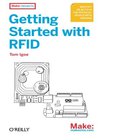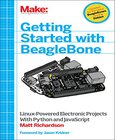Getting StartED with CSS

Book Details:
| Publisher: | friendsofED |
| Series: | Apress , Getting Started |
| Author: | David Powers |
| Edition: | 1 |
| ISBN-10: | 1430225432 |
| ISBN-13: | 9781430225430 |
| Pages: | 550 |
| Published: | Nov 30 2009 |
| Posted: | Nov 19 2014 |
| Language: | English |
| Book format: | |
| Book size: | 12.12 MB |
Book Description:
Knowledge of Cascading Style Sheets (CSS) is essential for developing modern, attractive websites, but many beginners are put off by the need to learn about unfamiliar concepts, such as selectors, properties, and classes, before they can achieve anything. Getting StartED with CSS takes a practical approach by showing you how to use CSS in simple stages, starting by changing the default appearance of HTML tags to improve the look of text and links. It assumes no prior knowledge of CSS and avoids bombarding you with unnecessary technical details. At the same time, it explains all the main points and acts as a reference that you can come back to when you need to refresh your memory. More advanced concepts are introduced gradually, so that by the end of the book you'll have a solid understanding of all the main aspects of CSS. Particular attention is paid to avoiding the common pitfalls of beginners, enabling you to create websites that not only look good, but also are easy to maintain. Requires no previous knowledge of CSS Instant resultsstarts off by showing how improve the look of a website stage by stage Doesn't bombard you with endless rules and jargon What youll learn How to immediately improve the look of your entire website by controlling fonts and colors with just a few lines of code. How to control the layout of elements on the page without resorting to complex tables. How to add background images that appear exactly where you want them. How to create effective style sheets that are easy to maintain by avoiding common mistakes such as over-reliance on classes ("classitis"). How browsers display page elements and master CSS positioning. How to experiment with advanced CSS selectors. Who this book is for This book is aimed at anybody who wants to learn how to style websites using CSS. The primary readership is likely to be independent web developers and serious hobbyists, but knowledge of CSS is essential to anyone planning a career in web development, so it should also find a place in the curriculum of academic courses in media studies. Table of Contents What Is CSS, and Why Should I Learn It? How Do I Improve the Look of Text and Links? How Can I Improve the Layout of My Text? How Can I Flow Text Around Images? How Do I Add Backgrounds and Borders to Improve the Look of My Page? How Do I Solve the Mysteries of Width and Height? How Do I Create Differently Styled Sections? How Do I Style Lists and Navigation Menus? How Do I Style Tables? How Do I Position Elements Precisely on the Page? Are There Any Guidelines for Basic Page Layout? How Do I Create Styles for Printing?
Download Link:
Related Books:
Getting Started with RFID
Identify Objects in the Physical World with Arduino
If you want to experiment with radio frequency identification (RFID), this book is the perfect place to start. All you need is some experience with Arduino and Processing, the ability to connect basic circuits on a breadboard with jumper wire-and you're good to go. You'll be guided through three hands-on projects that let you experience RFID in action. RFID is used in various applications, such as identifying store items or accessing a toll road with an EZPass system. After you build each of the book's projects in succession, you'll have the knowledge to pursue RFID applications of your own. Use Processing to get a sense of how RFID readers behave Connect Arduino to an RFID reader and discover how to use RFID tags as keys Automate your office or home...
Getting Started with BeagleBone
Linux-Powered Electronic Projects With Python and JavaScript
Many people think of Linux as a computer operating system, running on users' desktops and powering servers. But Linux can also be found inside many consumer electronics devices. Whether they're the brains of a cell phone, cable box, or exercise bike, embedded Linux systems blur the distinction between computer and device. Many makers love microcontroller platforms such as Arduino, but as the complexity increases in their projects, they need more power for applications, such as computer vision. The BeagleBone is an embedded Linux board for makers. It's got built-in networking, many inputs and outputs, and a fast processor to handle demanding tasks. This book introduces you to both the original BeagleBone and the new BeagleBone Black and gets you start...
Mainframe Basics for Security Professionals
Getting Started with RACF
Leverage Your Security Expertise in IBM System z Mainframe Environments For over 40 years, the IBM mainframe has been the backbone of the world's largest enterprises. If you're coming to the IBM System z mainframe platform from UNIX , Linux , or Windows , you need practical guidance on leveraging its unique security capabilities. Now, IBM experts have written the first authoritative book on mainframe security specifically designed to build on your experience in other environments. Even if you've never logged onto a mainframe before, this book will teach you how to run today's z/OS operating system command line and ISPF toolset and use them to efficiently perform every significant security administration task. Don't have a mainframe availabl...
2007 - 2021 © eBooks-IT.org



